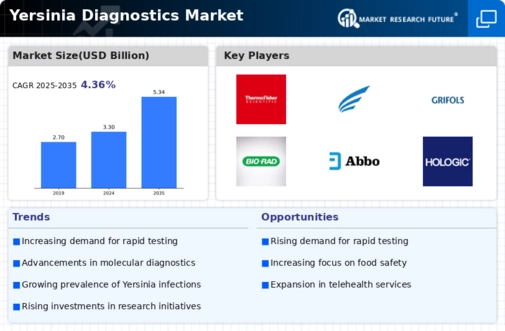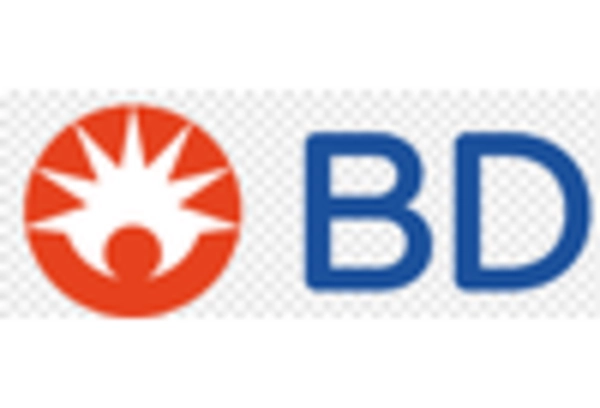Growing Public Health Initiatives
The rise of public health initiatives aimed at controlling infectious diseases is a crucial driver for the Yersinia Diagnostics Market. Governments and health organizations are increasingly prioritizing the monitoring and management of infectious diseases, including those caused by Yersinia species. These initiatives often involve enhanced surveillance and diagnostic efforts, leading to a greater demand for reliable diagnostic tools. As public health campaigns gain momentum, the Yersinia Diagnostics Market is likely to experience increased interest from stakeholders seeking to improve disease detection and management. This focus on public health could result in expanded market opportunities for diagnostic manufacturers.
Advancements in Diagnostic Technologies
Technological advancements in diagnostic methodologies are significantly influencing the Yersinia Diagnostics Market. Innovations such as polymerase chain reaction (PCR) and next-generation sequencing (NGS) have enhanced the accuracy and speed of Yersinia detection. These technologies allow for the rapid identification of pathogens, which is crucial in managing outbreaks effectively. The market is witnessing an influx of novel diagnostic kits that leverage these advancements, thereby improving the overall efficiency of Yersinia diagnostics. As healthcare providers increasingly adopt these technologies, the Yersinia Diagnostics Market is poised for substantial growth, driven by the demand for more reliable and faster diagnostic solutions.
Rising Incidence of Yersinia Infections
The increasing incidence of Yersinia infections, particularly Yersinia pestis and Yersinia enterocolitica, is a primary driver for the Yersinia Diagnostics Market. Reports indicate that cases of Yersinia enterocolitica have been on the rise, with outbreaks linked to contaminated food sources. This trend necessitates the development and implementation of effective diagnostic tools to identify infections promptly. As healthcare systems strive to manage these infections, the demand for accurate and rapid diagnostic solutions is expected to grow. The Yersinia Diagnostics Market is likely to benefit from this heightened awareness and the need for improved diagnostic capabilities, potentially leading to innovations in testing methodologies and technologies.
Regulatory Support for Diagnostic Innovations
Regulatory bodies are increasingly supporting the development of innovative diagnostic solutions, which is beneficial for the Yersinia Diagnostics Market. Streamlined approval processes and incentives for research and development are encouraging companies to invest in new diagnostic technologies. This regulatory environment fosters innovation, allowing for the introduction of more effective and efficient diagnostic tools for Yersinia infections. As a result, the market is likely to see a surge in new products that can address the challenges associated with Yersinia diagnostics. The supportive regulatory landscape may also enhance collaboration between public health organizations and diagnostic manufacturers, further propelling market growth.
Increased Investment in Infectious Disease Research
The growing investment in research focused on infectious diseases is a significant driver for the Yersinia Diagnostics Market. Governments and private organizations are allocating substantial funds to understand and combat various pathogens, including Yersinia species. This influx of funding is likely to facilitate the development of advanced diagnostic tools and methodologies. Furthermore, as research progresses, new insights into Yersinia infections may emerge, leading to the creation of targeted diagnostic solutions. The Yersinia Diagnostics Market stands to gain from this trend, as enhanced research efforts could translate into innovative products that meet the evolving needs of healthcare providers.


















Leave a Comment